| Srl | Item |
| 1 |
ID:
144333
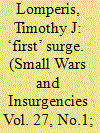

|
|
|
|
|
| Summary/Abstract |
In a military intervention, do surges work? I compare the failed ‘surge’ in Vietnam, the repulse of the Easter Invasion in 1972, as a means of assessing the more ambiguous surges in Iraq and Afghanistan. I identify four features of a surge for this analysis: the military dimensions and strategy of the surging forces, the military capabilities of the host forces, the political vitality and will of the host country, and the political commitment in the domestic politics of the intervener. I find that the last feature is the most critical; and, in all three surges, the American political commitment was lacking.
|
|
|
|
|
|
|
|
|
|
|
|
|
|
|
|
| 2 |
ID:
079200
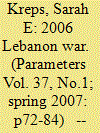

|
|
|
| 3 |
ID:
078838
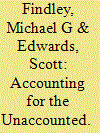

|
|
|
|
|
| Publication |
2007.
|
| Summary/Abstract |
This paper addresses a puzzle of how conflicts characterized by significant power asymmetries often play out much differently than dominant powers expect. We adapt the notions of institutionalized peace and riot systems from the literature on ethnic violence to identify ways in which social institutions attenuate collective action dilemmas, thereby increasing capability for a less-powerful group. Dominant groups often miscalculate the true nature of capability relationships by failing to account for these group-specific institutions that operate in the face of exogenous threats. We illustrate our model with two episodes of Chechen mobilization in the 1990s
|
|
|
|
|
|
|
|
|
|
|
|
|
|
|
|
| 4 |
ID:
133594
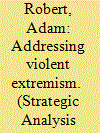

|
|
|
|
|
| Publication |
2014.
|
| Summary/Abstract |
In the years since the hostilities in Sri Lanka ended in 2009, the understandable international focus on the evidence of war crimes by both sides has diverted attention from certain other questions that emerge from the 26-year conflict between the Liberation Tigers of Tamil Eelam (LTTE) and the Sri Lankan government. Here I briefly explore three general questions that have arisen not only in Sri Lanka but also in many other modern conflicts, including those characterised by what is variously called asymmetric warfare, violent extremism or terrorism.
|
|
|
|
|
|
|
|
|
|
|
|
|
|
|
|
| 5 |
ID:
117110
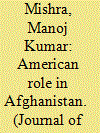

|
|
|
| 6 |
ID:
117109
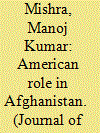

|
|
|
| 7 |
ID:
080247
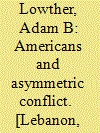

|
|
|
|
|
| Publication |
New Delhi, Pentagon Press, 2008.
|
| Description |
xvi, 233p.
|
| Standard Number |
9780275996352
|
|
|
|
|
|
|
|
|
|
|
|
Copies: C:1/I:0,R:0,Q:0
Circulation
| Accession# | Call# | Current Location | Status | Policy | Location |
| 053080 | 355.42/LOW 053080 | Main | On Shelf | General | |
|
|
|
|
| 8 |
ID:
112038
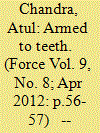

|
|
|
| 9 |
ID:
092120
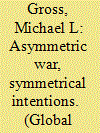

|
|
|
|
|
| Publication |
2009.
|
| Summary/Abstract |
During asymmetric war, a state actor often faces charges of disproportionate harm while the weaker, nonstate side must defend itself against charges of terrorism. Because the state actor faces an adversary embedded among civilians, and the nonstate actor confronts an opponent whose military targets are often so well protected that only its nonmilitary targets are vulnerable, it is difficult for either side to fight without harming civilians. While humanitarian law tries to protect noncombatants to the greatest extent possible, too strict an interpretation of terrorism and proportionality may unduly restrict either side's ability to pursue political claims by force of arms. To successfully walk the line between protecting civilians during asymmetric war and allowing each side a 'fighting chance', it is necessary to take another look at the idea of intentionality and the definition of combatants. While intentional harm is the hallmark of terrorism, state armies also bring intentional harm if they expect to glean military benefits from causing collateral damage to civilians. A tighter understanding of intentionality can further protect innocent, noncombatant civilians. At the same time, however, the international community must recognise that not all civilians are noncombatants. Many civilians take a direct or indirect role in the fighting. As such, some civilians are vulnerable to lethal harm while others remain subject to nonlethal harm. Asymmetric war expands the range of permissible civilian targets that each side may attack without incurring charges of terrorism or disproportionate harm.
|
|
|
|
|
|
|
|
|
|
|
|
|
|
|
|
| 10 |
ID:
088800
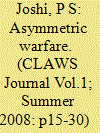

|
|
|
| 11 |
ID:
095569
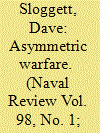

|
|
|
| 12 |
ID:
095658
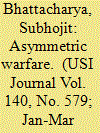

|
|
|
| 13 |
ID:
111278
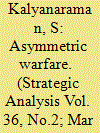

|
|
|
|
|
| Publication |
2012.
|
| Summary/Abstract |
Coined a few years ago, 'asymmetric warfare' is an umbrella term that includes insurgent and terrorist campaigns that Western militaries were forced to contend with in the course of external interventions. Asymmetric wars for Western countries are wars of choice, not wars of necessity.
|
|
|
|
|
|
|
|
|
|
|
|
|
|
|
|
| 14 |
ID:
103435
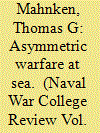

|
|
|
| 15 |
ID:
094671
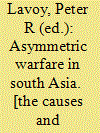

|
|
|
|
|
| Publication |
New Delhi, Cambridge University Press, 2010.
|
| Description |
xvii, 407p.
|
| Standard Number |
9780521193856
|
|
|
|
|
|
|
|
|
|
|
|
Copies: C:1/I:0,R:0,Q:0
Circulation
| Accession# | Call# | Current Location | Status | Policy | Location |
| 054861 | 954.6052/LAV 054861 | Main | On Shelf | General | |
|
|
|
|
| 16 |
ID:
130287
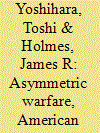

|
|
|
| 17 |
ID:
054921
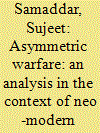

|
|
|
| 18 |
ID:
051934
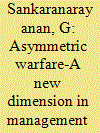

|
|
|
| 19 |
ID:
022264
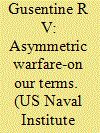

|
|
|
|
|
| Publication |
Aug 2002.
|
| Description |
58-61
|
|
|
|
|
|
|
|
|
|
|
|
|
|
|
|
| 20 |
ID:
064075
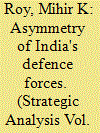

|
|
|